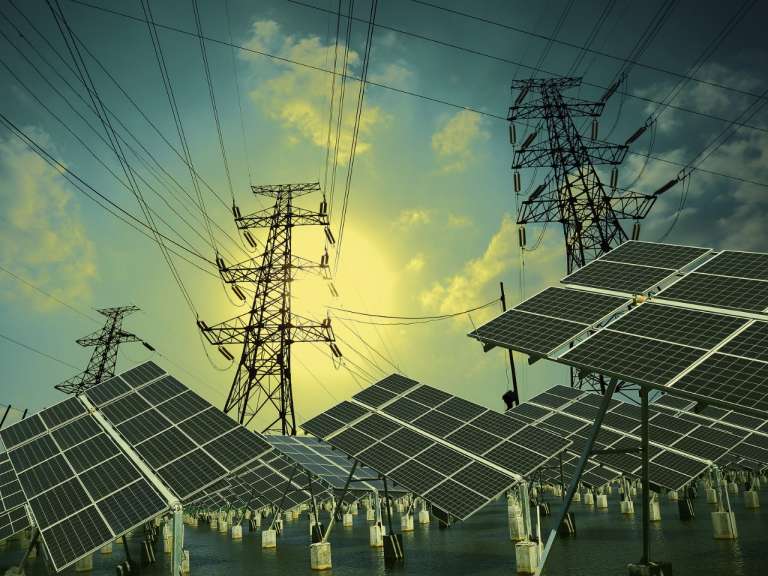Solving Electricity Problems on a Macro Scale With Microgrids
Ken SilversteinMicrogrids can deliver clean, reliable electricity to remote regions of the world that don't have access to centralized generation and transmission.

With climate talks heating up around the world, one subject is beginning to get an increasing amount of attention: microgrid technologies, which are delivering electric service to remote, defined areas and changing electricity protocols. Microgrids are a disruptor to watch—especially in regions without adequate access to electricity—not only because they use onsite generation, but also because they're often fueled by rooftop solar panels.
Microgrid technologies have the potential to benefit both electricity providers and consumers. They're part of emerging smart grid layouts, which seek to beef up cybersecurity, reduce emissions, and cut costs for utilities. Consumers, meanwhile, get a clean, reliable delivery mechanism—especially those in remote regions of the world that don't currently have access to perpetual electricity.
Altogether, about 1.1 billion people do not have dependable power, with the overwhelming majority of those in sub-Saharan Africa and Asia, according to the Energy Access Outlook 2017 report by the International Energy Agency (IEA). The key to getting electricity to those regions is microgrids. But to achieve that success by 2030,
The good news is that the microgrid technology market is growing by 20 percent a year, according to Bloomberg New Energy Finance. It totaled $6.8 billion globally as of 2017, adds the Advanced Energy Economy. And Bloomberg New Energy Finance also says that island nations alone announced 15 different projects in the past year. Singapore's Semakau island, for example, aims to combine wind, solar, and natural gas in an attempt to power a landfill site there.
Even better, the costs of both renewables and energy storage technologies—two assets central to the facilitation of microgrids—are falling. And microgrid networks will continue to grow as a result.
The bad news is that CrossBoundary, a firm that leverages private capital to unlock economic potential in the developing world, told the Clean Energy Finance Forum that the payback for microgrid systems takes 10 years. To that end, CrossBoundary goes on to say that developers often have to charge more per kWh. That's because developed nations have densely populated, urban areas that consume a lot of power, while developing countries have sparse populations that use much less electricity, requiring companies to charge more.
Despite the obstacles, microgrid technologies hold promise in the developing world because of the difficulty of building centralized generation and delivery systems there. It's tantamount to those same places skipping over the traditional wireline telephone systems and going straight into using mobile cellular devices.
Take sub-Saharan Africa as an example: Africa experienced near six-percent economic expansion during the global recession, although it has slowed in recent years and is now about half that, says the International Monetary Fund's World Economic Outlook. And that overall growth has come despite the fact that 600 million people on the continent lack access to electricity, the IEA report notes, which fuels any economic expansion.
But that deficiency is changing because multinational corporations from around the world are either actively investing in the region or actively discussing that possibility. Chinese organizations have long recognized the region's potential, while western enterprises are now getting involved, all with a goal of electrifying the whole continent. One such example of a successful Chinese company doing business in Africa is the telecommunications operator Huawei.
In fact, investor-owned corporations along with private partners have vowed to invest billions of dollars to help modernize sub-Saharan Africa's energy infrastructure. The United States government also began investing $7 billion into the region during the Obama presidency and under an initiative called Power Africa. Altogether, the IEA report notes that Africa will require $400 billion by 2035 to power the continent.
As the global community addresses the twin needs to limit temperature increases and provide universal access to electricity, the importance of microgrid technologies will only increase. While the associated costs still need to come down, such small, localized grids have the ability to deliver clean and reliable electricity—an asset that will become more prevalent in frontier countries.
The rise of renewables, the retirements of coal and nuclear plants, advances in gas turbine technology, increased competition across fuel sources, and emissions legislation are changing market dynamics across the globe.
Staying on top of strict "green" regulations is challenging, but environmental control systems keep utility managers from seeing red.
An architect shares insights into how cities are tasked with recreating their energy architecture to deal with natural disasters.